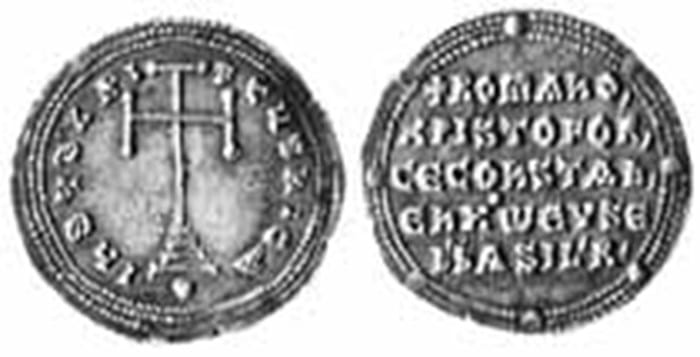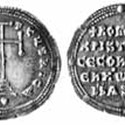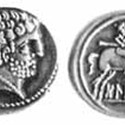Some readers will remember when HSBC Bank was called Midland and they had a stylised griffin as their logo. In classical times the griffin, half lion and half eagle, was considered the guardian of the treasury. There was a particularly splendid rendering of a griffin on a silver coin from the City of Abdera (Macedonia) struck in the late 6th century BC. This attractive coin could loosely be described as 'common'. Consequently it is relatively affordable and certainly desirable. Despite an estimate of €800, only €700 (£460) was required to buy it.
The coinage of Spain, or Hispania as the Romans would have called it, has an interest of its own, not least because much of it is inscribed in the Oscan alphabet. There was a nice first century BC denarius smeared with Oscan letters estimated at €100. It made €130 (£85).
Coming into the early medieval period, what better expression of the perceived universality of Christianity than the silver 'melioration' of 10th century Byzantium. The Cross in triumph speaks volumes. Again a relatively common coin, it only needed €180 (£118) to take it home. The estimate was €80.
Griffin becomes the guardian of the bargain
ANY sale overseen by Alain Weil has the potential to be interesting. His sale at the Hôtel Bergère, Paris, on June 18 was no exception. The items on offer in this 455-lot sale ranged from classical times to the distinctive medals of the Art Deco.








